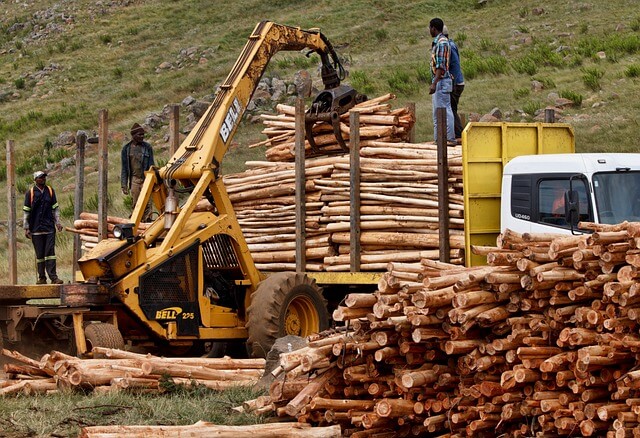By John Yakabuski, Minister of Natural Resources
Earlier in my career, I ran a hardware store in Barry’s Bay in the Ottawa Valley — a community of 1,200 people founded as a lumber town more than a century ago. My family has lived there for more than 150 years.
Good jobs in forestry have kept the lights on in communities in the Ottawa Valley for generations. Those jobs mean families can afford to put food on their table. This income in turn helped to keep Yakabuski’s Home Hardware in the black. It enabled me to employ dozens of hard-working Barry’s Bay area residents.
That’s the thing: when people have good jobs, their earnings go right back into the community — to retailers, restaurants, professional services, dance lessons, and minor hockey. And as we continue to reopen and recover from the COVID-19 outbreak, this kind of economic activity is needed now more than ever.
As we’ve said from our earliest days in office, our government’s vision for Ontario is a province that offers economic prosperity and opportunity in every region.
For many communities in our province — not just in the Ottawa Valley, but throughout northern and rural regions of Ontario — forestry is a lifeline. It’s the difference between prosperity and insolvency. Forestry helps to keep these communities strong and vibrant, providing opportunities for young people close to home.
Good Jobs and What They Do
The numbers speak for themselves: the forest sector generates more than $18 billion in revenues and supports 147,000 direct and indirect jobs in communities around the province — many with few other industries.
But the forest sector needs our help to reach its full potential. Investment has been held back for many years by uncertainty and red tape, costing thousands of jobs. For many communities, this uncertainty ripples out beyond the forest sector and into the households of residents who rely on it for their livelihoods.
In 2018, our government committed to developing a Forest Sector Strategy as a blueprint for helping the forest industry realize its tremendous potential. Last December, after hearing from industry, Indigenous communities, municipalities and others, we released a draft strategy. And now, following further discussions, we are preparing to release our final strategy.
Both industry and government recognize that for forestry to remain viable and sustainable in the long term, we need to ensure that Ontario’s forests stay healthy, diverse, and productive. That’s why the central pillar of Ontario’s Forest Sector Strategy is promoting stewardship and sustainability.
And that’s why the forestry industry in Ontario is held to some of the world’s highest standards of forest management: because a healthy and well-managed forest means good jobs today, tomorrow, and long into the future.
Our government is committed to strengthening the forest sector in Ontario and growing the economy of communities across the province. Our Forest Sector Strategy has been developed to give forestry operators some much-needed certainty — and give Ontario’s rural and northern communities some much-needed optimism.
Ensuring Job Creation and Economic Growth in Rural and Northern Ontario
With a focus on fostering innovation and promoting sustainable practices, the government is committed to driving job creation and economic growth in rural and northern Ontario. In order to achieve this, the following measures are being implemented:
- Investing in infrastructure: The government is investing in infrastructure projects such as roads, bridges, and broadband internet to improve connectivity and attract businesses to these regions. This will create new job opportunities and stimulate economic growth.
- Supporting entrepreneurship: The government is providing support and resources for entrepreneurs in rural and northern Ontario to start and grow their businesses. This includes access to funding, mentorship programs, and business development initiatives. By encouraging entrepreneurship, new jobs will be created and the local economy will flourish.
- Diversifying industries: The government is actively working to diversify industries in rural and northern Ontario, reducing the reliance on a single sector. This will create a more resilient economy and provide a wider range of job opportunities for residents. By attracting new industries and supporting existing ones, economic growth will be stimulated, leading to more job creation in these regions.
The Importance of Well-Managed Forests for Good Jobs
Ontario’s well-managed forests, coupled with strategic government support, are essential for creating and sustaining good jobs in rural and northern communities. Forest management plays a crucial role in ensuring sustainable job opportunities in the forestry industry.
Well-managed forests are the backbone of the industry, providing a renewable resource for various sectors such as lumber, pulp, and paper. Forest management practices, including sustainable harvesting and reforestation, ensure the long-term viability of the industry and the availability of good jobs.
Ontario’s commitment to stewardship and sustainability has led to the adoption of some of the highest standards of forest management in the world. By promoting responsible forest practices, the province ensures the continued economic growth and prosperity of rural and northern communities reliant on the forest sector for employment and livelihoods.
Addressing Uncertainty and Red Tape in the Forest Industry
To effectively promote the growth and sustainability of the forest industry, it is crucial to address the uncertainties and red tape that hinder investment and job creation. Reducing bureaucratic obstacles and streamlining regulations are key steps towards creating a more favorable investment climate for the forest industry.
By simplifying and clarifying the regulatory framework, businesses can navigate the processes more efficiently and allocate resources towards innovation and growth. Additionally, improving the investment climate involves creating incentives and support mechanisms for businesses to invest in research and development, technology adoption, and sustainable practices.
Fostering innovation within the industry will not only enhance productivity and competitiveness but also contribute to the long-term sustainability of the forest sector in rural and northern Ontario.
